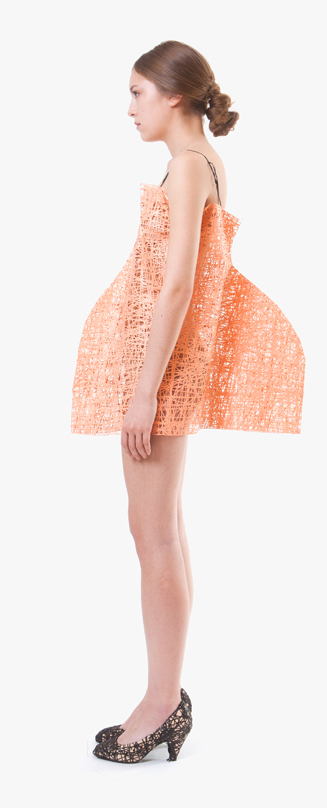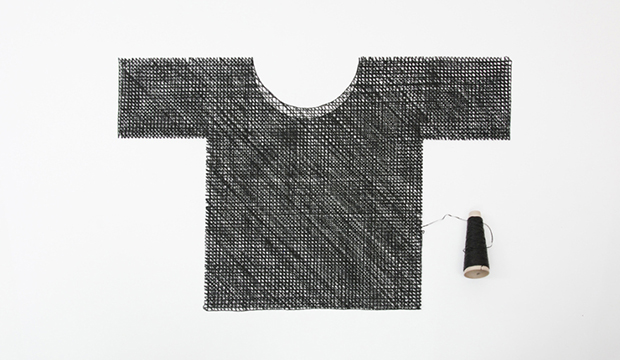
Emerging designers are certainly no strangers to making the most of the materials they have purchased, especially in this contemporary world of sustainability.
But no matter how much time you spend meticulously laying out patterns to conserve the fabric you’re cutting, there are always going to be a few pieces left over.
Considering that every cut-and-sew garment yields at least a few inches of fabric scraps, that adds up to a lot of waste. Fifteen to twenty percent of textiles used in garment production ends up on the cutting room floor, and subsequently, in landfills.
The situation poses an interesting design dilemma- is it possible to eliminate fabric waste entirely?

The project, titled Nuue (after the Korean word for cocoon), experiments with a new process that more closely resembles weaving or knitting than sewing.
Rather than creating a flat piece of fabric to cut up, Nuue skips any in-between steps and goes from spun yarn straight to finished garment.
Here’s how it works: A solid form such as a mannequin or a board is wrapped in synthetic yarn. It is then heat and pressure treated, taking on the shape of its “mold” to become a 3 dimensional garment.
Because there is no waste from either the weaving or cutting process, every bit of fiber is used.
The process is not only sustainable, but a beautiful and innovative new way to design textiles and garment silhouettes.
Depending on how the yarn is wrapped, the fabric can take on geometric or more abstract patterns. The fabric can take on any shape it is molded into with no cutting or sewing required (Lee has even created shoes using this method!)
Currently, the technique is still in development, but the garments Lee has made show a lot of potential in a sustainability-focused market.

